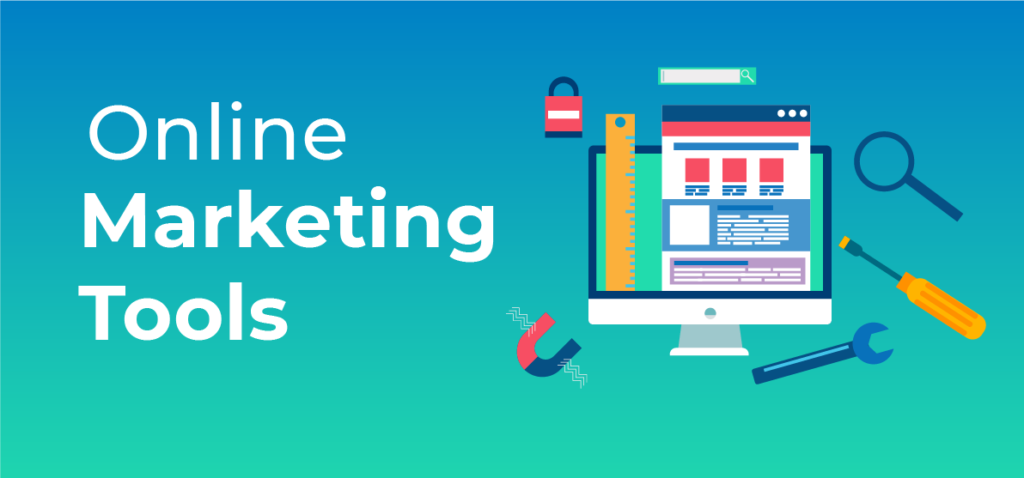The latest estimates show that we create about 328.77 million terabytes of data daily. That’s an incomprehensible amount of data coming from a wide range of sources such as social media, internet activity, transactions, and more. Manual collection and analysis of such vast data is neither practical nor possible. That’s why the use of AI data analytics in marketing is becoming increasingly crucial for businesses to stay competitive.
Data analytics encompasses everything related to collecting and analyzing data. The aim of data analytics is to extract insights. In the context of marketing, this would mean getting a deeper understanding of customer behavior and preferences.
As important as it is to collect data, it is equally important to make sense of it. However, only 39% of C-level leaders at organizations believe they manage data as an asset, whereas only 24% believe they are data-driven.
Using AI data analytics in marketing could be the key to unlocking the full potential of data. Along with facilitating quick and error-free data processing, AI also allows personalization and predictive analysis. Below, we look at the role of AI in data analytics for business functions, particularly marketing.
What Is AI in Marketing Analytics?
Let’s begin with decoding marketing analytics. It is the process of measuring and analyzing your company’s marketing performance data to optimize your strategies and maximize the return on investment (ROI). The big data analytics market has become a billion-dollar industry in the wake of an increased focus on data-driven decision-making.
Size of big data analytics market worldwide
Some notable objectives of marketing analytics include:
- Understanding customer behavior
- Measuring campaign effectiveness
- Predicting future trends and customer needs
- Identifying potential upselling and cross-selling opportunities
- Optimizing marketing spend
- Optimizing resource allocation
AI in marketing analytics means using artificial intelligence techniques to automate and enhance marketing data processes. An example would be using AI in recommendation engines.
Basically, AI gauges customer behavior and likes or dislikes to determine the most suitable content type or product for them. AI-powered recommendation engines are often used in e-commerce platforms and streaming services. Netflix is a prime example of this, where the platform uses AI algorithms to personalize recommendations based on user viewing history and preferences.
Applications of Netflix-style recommendation engines
There are several other use cases where similar recommendation engines could personalize marketing. For example, websites selling online courses can use AI algorithms to suggest courses based on the user’s interests and learning patterns. Similarly, music streaming services can suggest personalized playlists based on the user’s listening history.
Importance of Data Analytics in Marketing
Data analytics is paramount to making informed and strategic decisions in today’s competitive market. It helps in the following regards:
- Product Research: Customer feedback helps businesses understand what customers want and what changes they would like to see in the product.
- Customer Information: The more you learn about your customers, the better you can cater to their needs.
- Right Channels: Data analytics also helps determine the most effective channels to reach your target demographics.
- Competitor Analysis: Analyzing marketing data for your own business isn’t sufficient. Marketing data analytics also allows you to keep an eye on your competitors, understand their strategies, and tweak yours to stay ahead in the game.
Use of AI tool for competitor analysis
Issues of Traditional Marketing Analytics and How AI Resolves Them
Traditional marketing analytics often falls short in today’s data-driven world. Some of the issues with traditional marketing analytics that AI algorithms can resolve are:
- Data Vastness: Traditional analytics methods couldn’t keep track of every impression, view, click, interaction, and purchase. AI can.
- Data Filtering: Marketing data was often unreliable back in the day because misleading and irrelevant information was often not filtered. AI can sift through vast amounts of data to filter out useful information.
- Data Real-Time Velocity: Traditional analytics methods were slow at processing real-time data. By the time you processed it, the trend could have changed. Modern AI algorithms provide up-to-the-minute insights.
- Data Correlation: It was challenging to correlate different data sources to identify patterns. AI solves this issue by letting you connect different data sources and discover hidden insights.
- Data Prediction: Previously, data only offered current analytics. AI algorithms predict future trends, too.
Quick Read: How To Use AI For LinkedIn Marketing!
Types of Marketing Analytics and How AI Helps
There are three main types of marketing analytics. Marketers use all three of them in some form to derive insights. A Sprout Social report shows that 51% of marketers plan to use social data for curating marketing strategies and driving product development. Let’s look at the three ways in which such data can be used.
How marketers plan to use social in 2024
Types of Marketing Analytics and How AI Helps
There are three main types of marketing analytics. Marketers use all three of them in some form to derive insights and make data-driven decisions.
Descriptive Analytics
Descriptive analytics is the most basic form of data analysis. It uses historical data to provide insights into what happened in the past.
Suppose you had a spike in apparel purchases on your e-commerce site during the holiday season. The same thing has happened for the past few years. Descriptive analytics would identify this trend. It can also provide information about which products were most popular during that time and how much revenue was generated.
A primary characteristic of descriptive analytics is summarization. It summarizes large data volumes into meaningful metrics like frequencies, totals, distributions, and averages.
Predictive Analytics
Predictive analytics is more advanced than descriptive analytics. It focuses on foresight rather than hindsight and is used in several industries, raising its market size to a forecasted $13.94 billion in 2024.
Predictive analytics market size
Predictive models use historical and current data to make predictions about future outcomes. Using the same example, predictive analytics could help predict the expected increase in apparel purchases for the next holiday season.
It may take the analysis a step further by predicting which type of apparel will sell most based on current fashion trends.
Prescriptive Analytics
Prescriptive analytics is the most sophisticated type of marketing analytics. It combines descriptive and predictive analytics to provide actionable recommendations.
Some advanced techniques in prescriptive analysis include mathematical modeling, machine learning, simulations, optimization algorithms, and decision analysis.
Techniques used in prescriptive analytics
Prescriptive analytics answers the question, ” What should be done? ” It provides businesses with specific actions to take to achieve desired outcomes.
For example, based on predictive and descriptive analytics results, prescriptive analytics may recommend increasing inventory for popular apparel items or running a promotion on specific products to drive sales.
Applications of AI in Marketing Data Analytics
AI has quite a lot of applications in marketing data analytics. Here are some important ones.
Enhancing Customer Segmentation
Customer segmentation means dividing a market into smaller groups of similar customers. This way, the business can tailor their marketing efforts to each segment instead of using a one-fits-all approach.
AI can drive the following types of segmentation:
- Psychographic: The “psychographic” of a demographic is a relatively new concept that focuses on a target audience’s lifestyle, values, interests, and personality traits rather than just basic demographics like age and gender.
Psychographic segmentation metrics
- Event-Triggered: AI can also segment customers based on specific events, such as a significant sale or product launch. The way customers reacted to similar events in the past can help predict their response and personalize marketing efforts.
- Cross-sell/Upsell: You must have seen this on Amazon or other e-commerce websites. AI algorithms can segment customers based on how likely they are to buy Product B if they’ve already bought Product A.
AI-based segmentation has more potential than traditional segmentation for two reasons. One, it happens in real time. Two, it finds data points that human analysis cannot uncover.
Using AI Assistants for Insights
We’ve all heard praises of conversational AI. But most people only talk about it with respect to chatbots for customer service.
AI assistants can also be used in marketing analytics. All you need to do is feed the AI tools with all your marketing data. Then, you just “talk” to the chatbot ChatGPT style. For instance, you could ask, “What was the ROI for our latest email campaign?” or “Which demographic responded best to our social media ad?”
Improvado is one such tool. It has enterprise-grade dashboards where you see all your marketing information. Plus, there’s an AI co-pilot that answers all your marketing performance-related questions and even gives advice.
Improvado AI co-pilot
Performing Sentiment Analysis
Sentiment analysis is an integral part of marketing data analytics. You want to know what people are saying about your brand. Is it mostly positive, negative, or neutral? AI-based sentiment analysis tools can give you insights on this.
You can use this information to tailor your marketing campaigns accordingly. Let’s say you rolled out a social media ad. It garnered a lot of negative comments because of ambiguity or discriminatory undertones in your messaging.
AI tools can pick up the negative sentiment building up. That would help you take swift action instead of letting the ad run and do more damage to your brand.
Using AI Image and Video Analysis
Brands now have more social media platforms and channels to post on than they ever did. There are hundreds, if not thousands, of posts going up every second.
Given this overwhelming amount of content, it’s essential to make yours stand out. AI-backed visual brand monitoring tools help. They can tell you which colors or elements garner more engagement. Similarly, you can see which demographic reacts best to each visual type. The data will further help you in future campaigns.
Case Studies of AI in Marketing Data Analytics
Many businesses are already using AI in their marketing data analytics to improve decision-making and drive better results.
BMW
BMW AI assistant
BMW has launched a cutting-edge smart personal assistant, revolutionizing the way users engage with their vehicles akin to their interactions with smartphones. The app estimates traffic patterns and lets the drivers connect to other apps. It’s also a voice-activated guide for the drivers.
BMW then uses this data to target its messaging and marketing campaigns. The technology also helps the company build brand loyalty.
Starbucks
Starbucks is another company using AI to collect customer data and analyze it. The brand’s DeepBrew initiative is an AI-based platform that uses customer data to decide on new Starbucks locations. It optimizes the allocation of store labor and also helps manage store inventory.
Top AI Data Analytics Tools for Marketing
With new AI tools being developed every day, selecting one for your use case can be a bit tricky. Below, we have given a list based on common use cases, popularity, affordability, and features, to help guide your decision.
Customfit.ai
Behavioral traits Customfit.ai captures
Customfit.ai is an AI tool specifically made for marketers who want to study customer journeys and create no-code campaigns. It has a drag-and-drop visual editor that lets you curate personalized experiences for your customers. Since the tool gathers behavioral data and traits of your target audience, you can use it to personalize your marketing strategies. You can also see detailed analytics from multiple channels in a centralized platform.
On Page AI
On Page AI in action
On Page AI shows marketers the data they need to optimize their web pages for better search engine rankings and higher conversion rates. The platform provides advanced predictive link-building functionalities, empowering marketers to pinpoint potential high-quality backlink prospects.
Outranking.io
Outranking.io in action
As the name gives away, Outranking.io boasts features to help marketers outrank their competitors in SERPs. It gives an in-depth analysis of on-page factors, like titles, meta descriptions, backlinks, general page structure, and visual placement to optimize your content and beat competing websites. The real-time feedback features facilitate quick adjustments in marketing strategies.
Mutiny
Engagement data comparison in Mutiny
Mutiny is an AI data analytics platform for B2B businesses. Marketers can use the tool to segment their audience by company size, industry type, and funnel stage. The AI side of the tool offers suggestions about content creation and personalization.
Sprout Social
Sprout Social in action
Sprout Social is a popular AI-powered data analytics tool for social media. It offers a comprehensive overview of your brand’s social media performance, including engagement metrics, follower growth, and audience demographics. Besides regular metrics, you can also use the platform to track hashtags and evaluate your paid social advertising across channels.
Best Practices for AI Data Analytics in Marketing
When it comes to employing AI for data analytics in marketing, certain best practices must ensue. These practices help keep your analytics process ethical and efficient.
Use the Right Tools
We’ve already discussed how there’s a plethora of tools out there. The ones you choose will depend on your needs. But is it the right choice? Determining this will be crucial to the success of your AI-driven data analytics.
Sometimes, even the most hyped AI tools don’t do the job for you. Why? They’re not fit for your use case.
Trial and error is key here. Take advantage of free trials and demos before committing to a tool.
Maintain Compliance and Data Privacy
Ever since AI has become more mainstream, there have been woes about its ethical use. As a marketer, you must ensure you comply with not only your brand’s guidelines but also regulatory policies. For example, the General Data Protection Regulation (GDPR) stipulates how businesses should collect and store customer data.
Data privacy and AI use
Data privacy is of utmost importance as it helps maintain consumer trust and loyalty. With the rise of cybercrime, people are becoming increasingly wary of how their data can fall into the wrong hands. Businesses must take every measure to protect customer data and be transparent about its use.
Implement Real-Time Analytics
The world is changing at an unprecedented pace. One day, you’re playing with ChatGPT, and the next day, there are a hundred new tools to try. The same is true about people’s preferences; they’re highly dynamic.
Increase in AI tools and startups
Real-time analytics is the answer to keeping up with these changes. With this approach, you can stay ahead of the curve by analyzing data as it comes in and adjusting your strategies accordingly.
Engage Human Insights
AI alone won’t suffice in marketing analytics. You have to bring human insights to the mix.
After all, it’s people who make the ultimate decisions and take action based on your data-driven strategies. Human insights can provide context and understanding that AI may not be able to grasp.
Challenges of Using AI Data Analytics in Marketing
As more and more businesses adopt AI data analytics to enhance their marketing strategies, it also becomes highly imperative to address and resolve accompanying challenges.
Privacy Concerns
As mentioned above, the concerns surrounding data privacy have always been a hot topic when it comes to AI data analytics. The use of consumer data for personalized marketing and targeted advertising has sky-rocketed in recent years. So, people are understandably worried about the misuse of their personal data.
Level of control consumers want on their data
The issue is particularly important in light of the numerous data breaches and scandals that have come to light in recent years. Marketers must comply with all data privacy laws and regulations to build trust with their customers.
Lack of Transparency
There’s often not enough transparency in how AI data analytics models work. Many algorithms are complex and not easily understood by those without a technical background. Such a lack of transparency can make it difficult for marketers to trust and rely on the data fully.
Data Quantity/Quality
How do you know if the amount of data you have is sufficient? And how do you ensure its quality? These are important questions when it comes to using AI data analytics in marketing.
Marketers should check for AI biases in their data. Plus, they should collect data from multiple sources to ensure its diversity and all-roundedness. Regular data cleaning and filtering are also a must.
Future Trends in AI Marketing Data Analytics
Let’s look at a few future trends in AI marketing data analytics that are set to shape the industry.
Rise of Conversational/Voice Analytics
Voice search has become increasingly popular in recent years, with 50% of the US population using voice search daily. About 16% of users employ voice search for ”near me” searches.
That means local businesses must collect voice analytics data to understand their customer’s voice search behavior. We’ll see more of this happening in the future.
What do people use voice search for
Use of Cross-Channel Attribution
Customers don’t just walk into your store and buy something. Most of them don’t even do this online. Instead, they see your products on different channels, and this informs their decision to buy.
So, it makes sense that we’ll see more businesses adopting cross-channel attribution to understand the customer journey and make better marketing decisions.
Use of Predictive Customer Lifetime Value Analytics
Customer lifetime value (CLV) analysis lets businesses know how much revenue they can expect from a customer over their lifetime. Predictive analysis will take this a step further by using machine learning algorithms to forecast future customer behavior.
Conclusion
The crux of AI marketing data analytics is making sense of vast amounts of data to make informed decisions. As technology continues to evolve, we’ll see even more advancements and trends in this space. For now, marketers can use this technology to personalize customer experience, optimize ads, improve targeting, and meet their customers where they are.
Frequently Asked Questions
How can AI data analytics improve decision-making in marketing?
AI data analytics can improve decision-making in marketing by providing valuable insights and predictions based on large amounts of data. It helps marketers target the audience’s behavior and market trends more accurately.
What types of data can AI analyze in marketing?
AI can analyze various types of data in marketing, including customer demographics, purchasing behavior, website traffic patterns, social media engagement, etc.
Which AI technologies are commonly used in marketing data analytics?
Some common AI technologies used in marketing data analytics are sentiment analysis, natural language processing, customer segmentation, predictive analysis, anomaly detection, automated personalization, and recommendation systems.
How can marketers ensure the ethical use of AI in data analytics?
Marketers must comply with ethical standards and laws when using AI in data analytics. They should ensure that the data they collect is obtained ethically and individuals’ privacy is respected. Regular evaluations and audits can also address potential biases and ethical concerns in AI algorithms.







